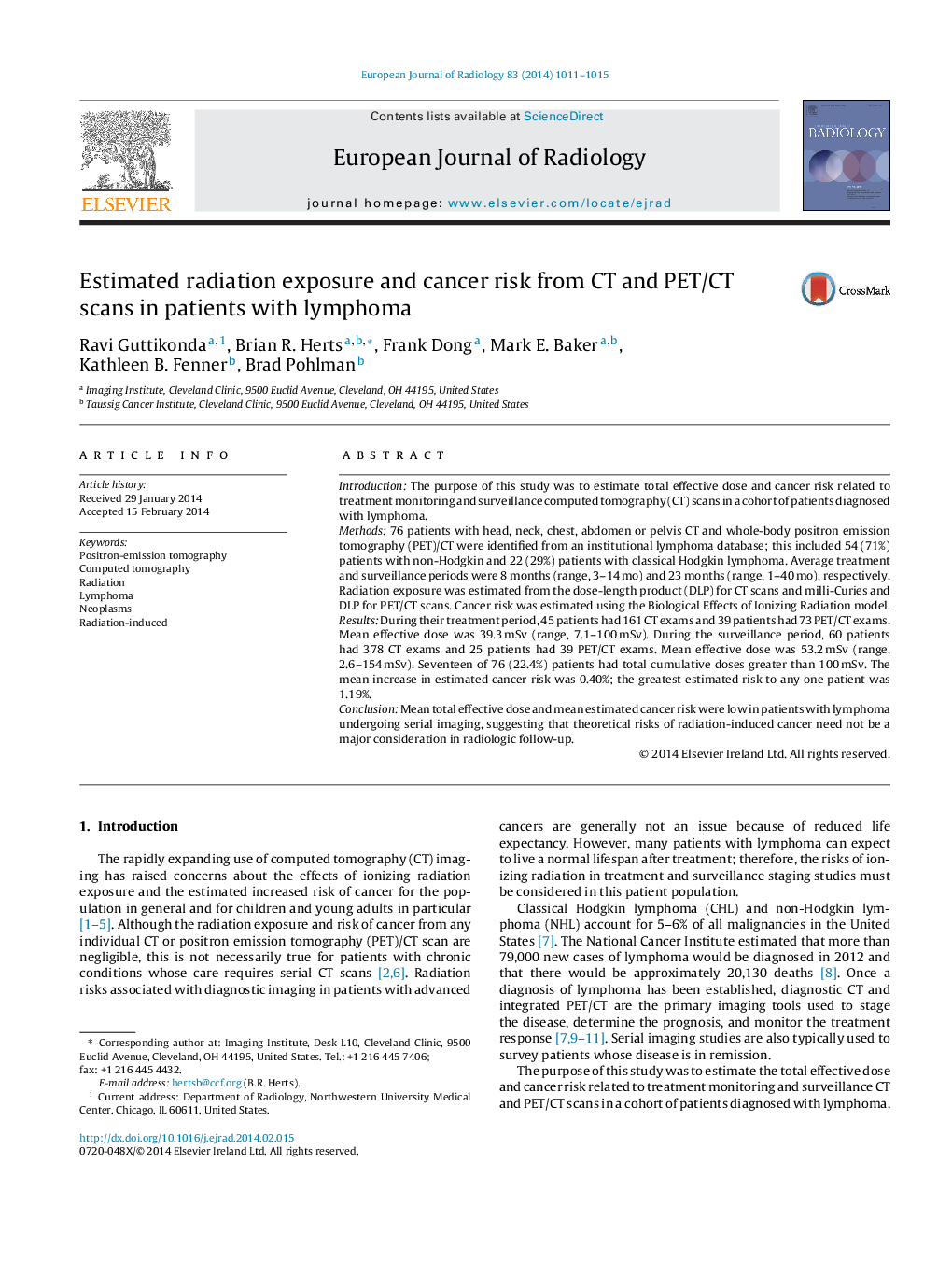| Article ID | Journal | Published Year | Pages | File Type |
|---|---|---|---|---|
| 4225248 | European Journal of Radiology | 2014 | 5 Pages |
IntroductionThe purpose of this study was to estimate total effective dose and cancer risk related to treatment monitoring and surveillance computed tomography (CT) scans in a cohort of patients diagnosed with lymphoma.Methods76 patients with head, neck, chest, abdomen or pelvis CT and whole-body positron emission tomography (PET)/CT were identified from an institutional lymphoma database; this included 54 (71%) patients with non-Hodgkin and 22 (29%) patients with classical Hodgkin lymphoma. Average treatment and surveillance periods were 8 months (range, 3–14 mo) and 23 months (range, 1–40 mo), respectively. Radiation exposure was estimated from the dose-length product (DLP) for CT scans and milli-Curies and DLP for PET/CT scans. Cancer risk was estimated using the Biological Effects of Ionizing Radiation model.ResultsDuring their treatment period, 45 patients had 161 CT exams and 39 patients had 73 PET/CT exams. Mean effective dose was 39.3 mSv (range, 7.1–100 mSv). During the surveillance period, 60 patients had 378 CT exams and 25 patients had 39 PET/CT exams. Mean effective dose was 53.2 mSv (range, 2.6–154 mSv). Seventeen of 76 (22.4%) patients had total cumulative doses greater than 100 mSv. The mean increase in estimated cancer risk was 0.40%; the greatest estimated risk to any one patient was 1.19%.ConclusionMean total effective dose and mean estimated cancer risk were low in patients with lymphoma undergoing serial imaging, suggesting that theoretical risks of radiation-induced cancer need not be a major consideration in radiologic follow-up.
